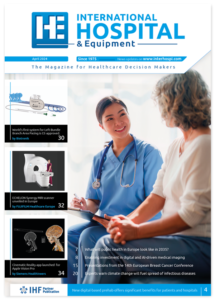AI doctor could boost chance of survival for sepsis patients
Scientists have created an artificial intelligence system that could help treat patients with sepsis.
The technology, developed by researchers from Imperial College London, was found to predict the best treatment strategy for patients.
The system ‘learnt’ the best treatment strategy for a patient by analysing the records of about 100,000 hospital patients in intensive care units and every single doctor’s decisions affecting them.
The findings showed the AI system made more reliable treatment decisions than human doctors. The team behind the technology say the tool could be used alongside medical professionals, to help doctors decide the best treatment strategy for patients.
Sepsis, also known as blood poisoning, is a potentially fatal complication of an infection, and kills around 44,000 every year in the UK.
In the study, researchers looked back at US patient records from 130 intensive care units over a 15 year period to explore whether the AI system’s recommendations might have been able to improve patient outcomes, compared with standard care. The researchers now hope to trial the system, called AI Clinician, in intensive care units in the UK.
Dr Aldo Faisal, senior author from the Department of Bioengineering and the Department of Computing at Imperial, said: “Sepsis is one of the biggest killers in the UK – and claims six million lives worldwide – so we desperately need new tools at our disposal to help patients. At Imperial, we believe that AI for Healthcare is the solution. Our new AI system was able to analyse a patient’s data – such as blood pressure and heart rate – and decide the best treatment strategy. We found that when the doctor’s treatment decision matched what the AI system recommended, they had a better chance of survival.”
The team used the AI system to assess which particular treatment approach to sepsis was most successful.
Sepsis can cause a drastic drop in blood pressure which can leave organs deprived of blood flow and oxygen, and can ultimately lead to multiple organ failure and death.
To raise blood pressure and keep the heart pumping, doctors give extra fluids, usually in the form of a salt solution, as well as medication that tightens blood vessels and raises blood pressure, called vasopressors.
Professor Anthony Gordon, senior author from the Department of Surgery & Cancer at Imperial explained: “We know that most patients with sepsis need fluid drips and in more severe cases also need vasopressors to maintain blood pressure and blood flow. There is still much debate amongst clinicians about how much fluid to give and when to start vasopressors. There are clinical guidelines but they provide general advice. The AI Clinician is able to learn what is the best option for each individual patient at that moment in time.”
We’re already making steps to improve diagnosis with our new sepsis tool, but we must also embrace any new technology solutions that can improve patient care and save lives.”
To help doctors decide which approach would boost a patient’s chance of survival, the research team created an AI system that would assess a patient’s vital signs and recommend the best treatment approach.
The system analysed the medical records of 96,000 US patients with sepsis in intensive care units. Using a process called reinforcement learning – where robots learn how to make decisions and solve a problem – the AI Clinician went through each patient’s case and worked out the best strategy of keeping a patient alive. The system calculated 48 variables including age, vital signs and pre-existing conditions.
The system then predicted the best treatment strategy for each patient with sepsis. The results revealed that 98 per cent of the time, the AI system matched or was better than the human doctors’ decision.
The study also found that mortality was lowest in patients where the human doctor’s doses of fluids and vasopressor matched the AI system’s suggestion. However, when the doctor’s decision differed from the AI system, a patient had a reduced chance of survival.
The team say the findings show the AI Clinician could help doctors decide the best treatment strategy for patients.
Imperial College Londonhttps://tinyurl.com/y7bubfbc

